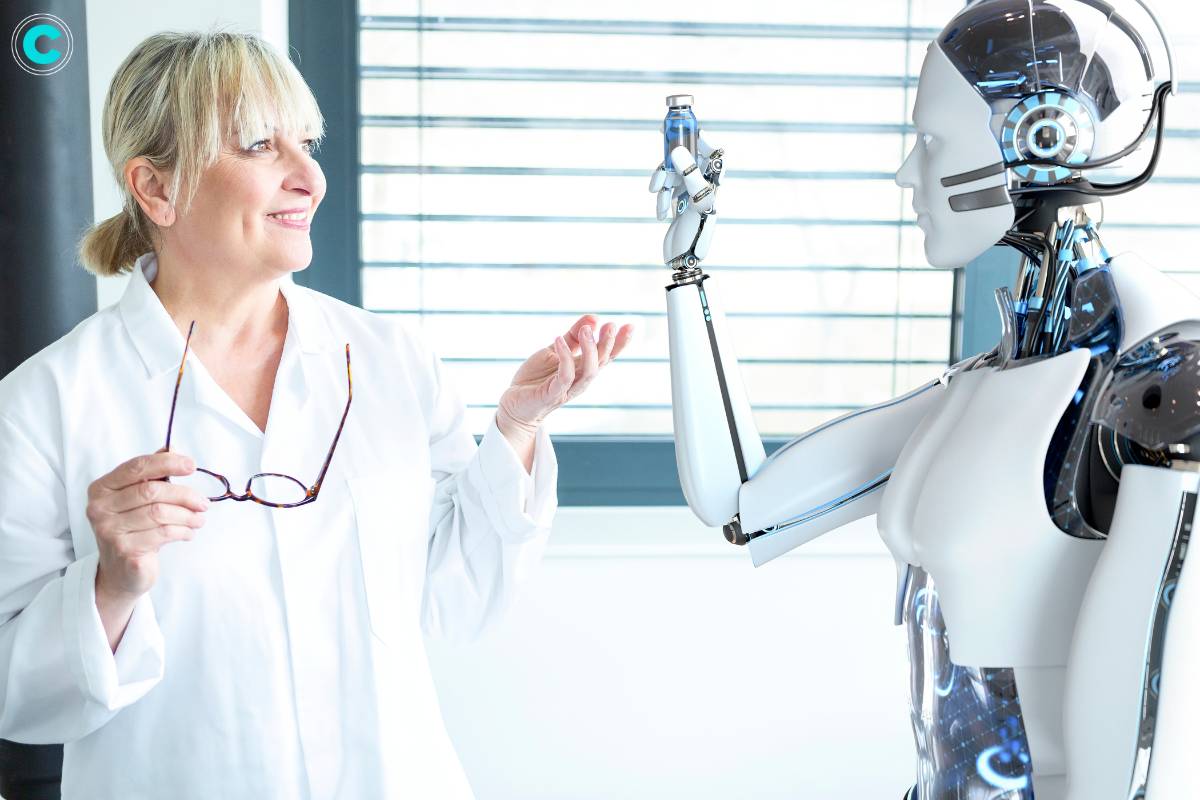Imagine a world where surgeries are performed with pinpoint precision, rehabilitation is accelerated with robotic assistance, and hospital logistics are seamlessly managed by intelligent machines. Welcome to the world of medical robots—a transformative force reshaping the landscape of modern healthcare. These advanced technologies are not just futuristic concepts; they are actively enhancing how we diagnose, treat, and care for patients today. From surgical robots that operate with unparalleled accuracy to AI-driven diagnostic tools, these robots are revolutionizing healthcare in ways we never thought possible.
History of Medical Robots
The journey of these robots began with early developments in robotics technology. The first significant milestone was the introduction of robotic assistance in surgeries during the 1980s. Since then, technological advancements have led to the creation of various specialized medical robots, each designed to perform specific tasks with remarkable accuracy.
Types of Medical Robots
1. Surgical Robots
One of the most well-known surgical robots is the Da Vinci Surgical System. This robotic system allows surgeons to perform complex procedures with minimal invasiveness, enhancing precision and reducing recovery times for patients. The Da Vinci system has revolutionized surgeries such as prostatectomies, hysterectomies, and heart valve repairs.
2. Rehabilitation Robots
Rehabilitation robots assist patients in recovering mobility and strength after injuries or surgeries. Examples include robotic exoskeletons that help paralyzed patients walk and robotic arms that aid in physical therapy exercises. These robots play a crucial role in speeding up the rehabilitation process and improving patient outcomes.
3. Hospital Robots
Hospital robots are used for logistics, such as transporting medical supplies, and for sanitation, including disinfecting rooms. These robots reduce the risk of infection and free up healthcare staff to focus on more critical tasks.
4. Diagnostic Robots

Diagnostic robots leverage artificial intelligence (AI) to analyze medical data and assist in diagnosing diseases. For example, AI-driven systems can examine medical images to detect abnormalities, such as tumors, with high accuracy, aiding radiologists in making more informed decisions.
Advantages of Medical Robots
These robots offer numerous advantages, including unmatched precision and accuracy in surgical procedures. They enable minimally invasive surgeries, resulting in smaller incisions, less pain, and quicker recovery times for patients. Additionally, these robots increase operational efficiency, allowing healthcare providers to treat more patients effectively. Enhanced patient care is another significant benefit, as robots can perform repetitive tasks with consistent quality.
Challenges and Limitations
Despite their benefits, these robots come with challenges and limitations. The high cost of acquiring and maintaining these robots can be a barrier for many healthcare facilities. Technical limitations, such as the need for regular maintenance and potential software malfunctions, also pose risks. Ethical concerns arise regarding the role of AI in decision-making and the potential for job displacement among healthcare workers. Moreover, specialized training is required for healthcare professionals to operate these advanced machines effectively.
Future of Medical Robots
The future of these robots looks promising, with continuous technological advancements on the horizon. The integration of AI with these robots is expected to enhance their capabilities further. Future applications may include more sophisticated diagnostic tools, personalized treatment plans, and advanced surgical techniques that go beyond human capabilities.
Case Studies
Several case studies highlight the success of these robots in healthcare. For instance, the use of the Da Vinci Surgical System has led to improved patient outcomes in minimally invasive surgeries. In another example, rehabilitation robots have significantly reduced recovery times for stroke patients, enabling them to regain mobility faster.
1. Medical Robots in the COVID-19 Era
The COVID-19 pandemic has underscored the importance of these robots. These robots have played a crucial role in pandemic response by performing tasks such as disinfecting hospitals, delivering medical supplies, and even assisting in remote diagnostics. Innovations spurred by COVID-19 have accelerated the adoption of these robots, highlighting their value in crisis situations.
2. Impact on Healthcare Professionals

The rise of these robots is changing the roles of healthcare professionals. While robots take over repetitive and physically demanding tasks, healthcare workers can focus on more complex and empathetic aspects of patient care. This shift necessitates new training and education programs to equip professionals with the skills needed to work alongside robots.
3. Global Perspectives
Adoption rates of these robots vary worldwide, with some countries leading the way in integrating these technologies into their healthcare systems. Countries like the United States, Japan, and Germany are at the forefront, investing heavily in medical robotics research and implementation.
Regulatory and Safety Considerations
Ensuring the safety and efficacy of these robots is paramount. Regulatory bodies, such as the FDA in the United States, oversee the approval and monitoring of these technologies. Strict guidelines and standards are in place to ensure patient safety and the ethical use of medical robots.
1. Economic Impact
The economic impact of these robots is significant. While the initial investment is high, the long-term benefits include reduced healthcare costs due to shorter hospital stays, fewer complications, and increased efficiency. A cost-benefit analysis often reveals that the advantages outweigh the expenses, making these robots a worthwhile investment for many healthcare institutions.
2. Public Perception and Acceptance
Public perception of these robots is generally positive, especially when their benefits are well-communicated. Patients appreciate the precision and efficiency brought by these robots, although some skepticism remains. Overcoming this skepticism involves transparent communication and demonstrating the safety and effectiveness of these robots.
3. Ethical Considerations

Ethical considerations surrounding these robots include privacy concerns, particularly with AI-driven diagnostic tools. Ensuring that patient data is securely handled and that robots are used ethically in decision-making processes is crucial. Balancing technological advancement with ethical responsibility is key to the sustainable integration of these robots in healthcare.
FAQs
1. What are medical robots?
These robots are advanced machines designed to assist in various healthcare tasks, including surgeries, diagnostics, rehabilitation, and hospital logistics.
2. How do these robots benefit patients?
These robots benefit patients by providing more precise and minimally invasive surgical options, improving diagnostic accuracy, and enhancing overall patient care through increased efficiency.
3. Are medical robots safe?
Yes, these robots are safe when properly maintained and operated by trained professionals. Regulatory bodies ensure that these robots meet stringent safety standards.
4. What is the future of medical robots?
The future of these robots involves further integration with AI, leading to more advanced diagnostic tools, personalized treatments, and innovative surgical techniques.
5. How widespread is the use of these robots?
The use of these robots is increasing worldwide, with leading countries like the United States, Japan, and Germany investing heavily in their adoption and development.
Conclusion
Medical robots are at the forefront of a healthcare revolution, offering unprecedented precision, efficiency, and improved patient outcomes. While the journey of integrating these advanced machines into everyday medical practices comes with challenges, the benefits far outweigh the hurdles. From enhancing surgical procedures and speeding up rehabilitation to ensuring hospital sanitation and aiding in diagnostics, these robots are proving to be indispensable allies in the medical field.
As technology continues to advance and AI becomes more integrated, the future of medical robots looks incredibly promising. These innovations are not only transforming patient care but also redefining the roles of healthcare professionals. Embracing this technological evolution is essential for a future where healthcare is more efficient, effective, and accessible for all.






